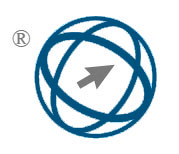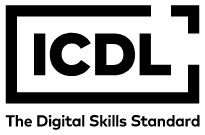DDPG-LSTM Framework for Personalized Athlete Training Plan Optimization and Competition Strategy Generation
Abstract
Traditional methods of athlete training plan formulation often rely on the coach's experience and expert judgment, leading to challenges in dynamically adjusting training plans to athletes' real-time performance and physical conditions. Such static approaches can cause issues like overtraining or undertraining, affecting athletes' overall performance. This paper introduces a deep reinforcement learning (DRL) framework, leveraging real-time data analysis to optimize personalized training plans and automatically generate intelligent competition strategies. By utilizing the Deep Deterministic Policy Gradient (DDPG) algorithm within the Actor-Critic framework, the study employs a state-of-the-art implementation with hyperparameters such as a learning rate of 0.001, batch size of 64, and discount factor (gamma) of 0.99. The key action spaces are defined, including training load (intensity), frequency, and rest intervals, while the reward function is tailored to balance training stress and performance improvement. Additionally, a Long Short-Term Memory (LSTM) model is integrated to analyze time-series data, refining strategies based on dynamic performance feedback. Experimental results show that the DDPG-based approach significantly improves athletes' performance by 12% in key metrics, such as shooting accuracy, and maintains the athletes' Training Stress Balance (TSB) in a healthy positive range over a 90-day training cycle. The LSTM-based game strategies, tested in simulated basketball playoff scenarios, outperform traditional strategies, increasing the final score by 13 points (104 vs. 91), demonstrating substantial improvements in competitive performance and strategy optimization.
Full Text:
PDFReferences
Yulianto W D, Yudhistira D. Content Validity of Circuit Training Program and Its Effects on The Aerobic Endurance of Wheelchair Tennis Athletes[J]. International Journal of Kinesiology and Sports Science, 2021, 9(3): 60-65.
Zerguine H, Healy G N, Goode A D, et al. Online office ergonomics training programs: A scoping review examining design and user-related outcomes[J]. Safety Science, 2023, 158: 106000.
Rosenblat M A, Lin E, da Costa B R, et al. Programming interval training to optimize time-trial performance: a systematic review and meta-analysis[J]. Sports medicine, 2021, 51: 1687-1714.
Wang C, Du C. Optimization of physical education and training system based on machine learning and Internet of Things[J]. Neural Computing and Applications, 2022: 1-16.
Zhang C, Lu Y. Study on artificial intelligence: The state of the art and future prospects[J]. Journal of Industrial Information Integration, 2021, 23: 100224.
Tseng M L, Tran T P T, Ha H M, et al. Sustainable industrial and operation engineering trends and challenges Toward Industry 4.0: A data driven analysis[J]. Journal of Industrial and Production Engineering, 2021, 38(8): 581-598.
Sharifani K, Amini M. Machine learning and deep learning: A review of methods and applications[J]. World Information Technology and Engineering Journal, 2023, 10(07): 3897-3904.
Taye M M. Understanding of machine learning with deep learning: architectures, workflow, applications and future directions[J]. Computers, 2023, 12(5): 91.
Azar A T, Koubaa A, Ali Mohamed N, et al. Drone deep reinforcement learning: A review[J]. Electronics, 2021, 10(9): 999.
Wurman P R, Barrett S, Kawamoto K, et al. Outracing champion Gran Turismo drivers with deep reinforcement learning[J]. Nature, 2022, 602(7896): 223-228.
Wang D, Hu M. Deep deterministic policy gradient with compatible critic network[J]. IEEE Transactions on Neural Networks and Learning Systems, 2021, 34(8): 4332-4344.
Zanette A, Wainwright M J, Brunskill E. Provable benefits of actor-critic methods for offline reinforcement learning[J]. Advances in neural information processing systems, 2021, 34: 13626-13640.
Lindemann B, Maschler B, Sahlab N, et al. A survey on anomaly detection for technical systems using LSTM networks[J]. Computers in Industry, 2021, 131: 103498.
Romaniszyn P, Kania D, Bugdol M N, et al. Behavioral and physiological profile analysis while exercising—case study[J]. Information Technology in Biomedicine, 2021: 161-173.
Demsar U, Long J A, Benitez-Paez F, et al. Establishing the integrated science of movement: bringing together concepts and methods from animal and human movement analysis[J]. International Journal of Geographical Information Science, 2021, 35(7): 1273-1308.
Zheng C, Wu W, Chen C, et al. Deep learning-based human pose estimation: A survey[J]. ACM Computing Surveys, 2023, 56(1): 1-37.
Cronin N J. Using deep neural networks for kinematic analysis: Challenges and opportunities[J]. Journal of Biomechanics, 2021, 123: 110460.
Singh B, Kumar R, Singh V P. Reinforcement learning in robotic applications: a comprehensive survey[J]. Artificial Intelligence Review, 2022, 55(2): 945-990.
Huang R, Qin C, Li J L, et al. Path planning of mobile robot in unknown dynamic continuous environment using reward‐modified deep Q‐network[J]. Optimal Control Applications and Methods, 2023, 44(3): 1570-1587.
Muni M K, Parhi D R, Kumar P B, et al. Towards motion planning of humanoids using a fuzzy embedded neural network approach[J]. Applied Soft Computing, 2022, 119: 108588.
Tran L, Hoang T, Nguyen T, et al. Multi-model long short-term memory network for gait recognition using window-based data segment[J]. IEEE Access, 2021, 9: 23826-23839.
Fei Y, Yang Z, Chen Y, et al. Exponential bellman equation and improved regret bounds for risk-sensitive reinforcement learning[J]. Advances in neural information processing systems, 2021, 34: 20436-20446.
Aziza J N A. Perbandingan Metode Moving Average, Single Exponential Smoothing, dan Double Exponential Smoothing Pada Peramalan Permintaan Tabung Gas LPG PT Petrogas Prima Services[J]. Jurnal Teknologi dan Manajemen Industri Terapan, 2022, 1(I): 35-41.
Wang H, Liu Z, Peng D, et al. Attention-guided joint learning CNN with noise robustness for bearing fault diagnosis and vibration signal denoising[J]. ISA transactions, 2022, 128: 470-484.
Martin D, O'Byrne J, Cates M E, et al. Statistical mechanics of active Ornstein-Uhlenbeck particles[J]. Physical Review E, 2021, 103(3): 032607.
Michaelsen M M, Esch T. Motivation and reward mechanisms in health behavior change processes[J]. Brain research, 2021, 1757: 147309.
Dubey S R, Singh S K, Chaudhuri B B. Activation functions in deep learning: A comprehensive survey and benchmark[J]. Neurocomputing, 2022, 503: 92-108.
Maharana K, Mondal S, Nemade B. A review: Data pre-processing and data augmentation techniques[J]. Global Transitions Proceedings, 2022, 3(1): 91-99.
Picornell A, Oteros J, Ruiz-Mata R, et al. Methods for interpolating missing data in aerobiological databases[J]. Environmental Research, 2021, 200: 111391.
Williams J, Hill R R, Pignatiello Jr J J, et al. Wavelet analysis of variance box plot[J]. Journal of Applied Statistics, 2022, 49(14): 3536-3563.
Lu R, Jiang Z, Wu H, et al. Reward shaping-based actor–critic deep reinforcement learning for residential energy management[J]. IEEE Transactions on Industrial Informatics, 2022, 19(3): 2662-2673.
Towlson C, Salter J, Ade J D, et al. Maturity-associated considerations for training load, injury risk, and physical performance in youth soccer: One size does not fit all[J]. Journal of sport and health science, 2021, 10(4): 403-412.
Cardoso R C, Ferrando A. A review of agent-based programming for multi-agent systems[J]. Computers, 2021, 10(2): 16.
Sohail A. Genetic algorithms in the fields of artificial intelligence and data sciences[J]. Annals of Data Science, 2023, 10(4): 1007-1018.
Li G, Liu F, Sharma A, et al. Research on the natural language recognition method based on cluster analysis using neural network[J]. Mathematical Problems in Engineering, 2021, 2021(1): 9982305.
Lindauer M, Eggensperger K, Feurer M, et al. SMAC3: A versatile Bayesian optimization package for hyperparameter optimization[J]. Journal of Machine Learning Research, 2022, 23(54): 1-9.
DOI: https://doi.org/10.31449/inf.v49i33.8820

This work is licensed under a Creative Commons Attribution 3.0 License.









